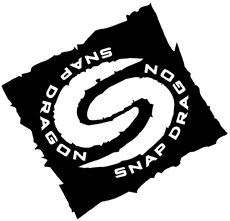Over the years, we’ve developed a new barometer for measuring the quality of movies: how long we think about them after we’ve left the theater. The more they resonate, the better. It’s a sign of well-crafted characters, compelling action, unusual insights and an altogether good story. The same is true of paddling. When we find ourselves thinking about our time on the water long after we’ve returned home, that’s a sure sign it was a good paddle. And more often than not, that’s because it, too, was a good story, complete with characters, action and insights. Enter characters: We often debate whether or not to invite other people to paddle with us. During the summer, we spend so much time coaching that time on the water alone together is rare, so during the fall, we appreciate doing more paddling on our own. And yet, we love to paddle with our friends and paddle socially with our students. So on this day, the characters were our friend and fellow coach, Greg Anderson, and our friend and frequent student, Ralph Akers. Characters drive action: As soon as we got on the water, a couple of things were apparent. First, Ralph brought a boat he hadn’t paddled all summer and fall, so he wasn’t as comfortable in conditions. Second, the winds were going to exceed the forecast of south winds 15 to 25 knots, shifting to southwest. Within an hour, they were 20 gusting to 25, then 25 gusting to 30, and they topped out at 27 gusting to 32 with peak winds of 38 knots before we got off the water. First plot device of the day. Add atmosphere: Winter paddling is special. The water ranges in color from icy blue to steely grey; the harbors are empty and there are few boats on the water. And there are spectacular alterations to familiar places, such as the icicles we found underneath one of the break walls. Queue action: It was a perfect day for a downwind paddle. For those of us who’ve spent significant time in following seas, this is pure joy: wind at our backs, waves to catch, and clapotis wherever hard surfaces cause the waves to bounce back out and combine. For those with less experience, it’s nerve-racking and a boat control challenge. In between is the perfect place for learning, and that’s where Ralph was. The story: The day’s plot, expressed as a equation, would be group + conditions = challenges + opportunities. Expressed as a story line, it would be four paddlers, confronted by cold water and strong winds, choose to do a downwind paddle. They wonder what they’ll find along the way. Conditions prove exciting for some and challenging for some, but rewarding for all....
Paddling on Halloween would have been no treat
The storm that struck Chicago on Halloween played quite a trick on this already freaky holiday. Waves on Lake Michigan reached 20 feet at buoy 45007 off Milwaukee–which means they were probably two feet higher off Chicago–and winds at the Harrison crib in Chicago topped 60 knots (that’s almost 70 miles per hour). We had to go downtown to see the mayhem. Windy, wavy Halloween from Sharon and Alec Bloyd-Peshkin on Vimeo. We were pummeled by small hail pellets as we trudged through Olive Park. Storm surge swamped the nearby stretch of Lake Shore Drive; tree branches and debris were everywhere. Out on the Pier, tour boat crews struggled to secure their vessels and keep them from crashing into the walls. The haunted barge had broken loose and was thrashing up and down in a fashion far spookier than its creators intended. Cheerful posters about the sunny future of the Pier lay splintered on the ground. It was a great evening to watch the water from the safety of land, and to plan a paddle for the following morning, when the winds would be down below 30 knots, the waves would be in the five to 10-foot range, and the danger would be...
Photo Friday: Farewell to Fall
...
It’s all about having fun in boats
After a long season of coaching and training, we spent the past two weekends just paddling. All sorts of boats; all kinds of water. We were especially excited about paddling our new Esquif Detonator, a ten-foot banana of a whitewater canoe that was all kinds of fun catching eddies and surfing small wave holes. It was also nice to be back in our whitewater kayaks, which have seen too little water this season, eclipsed by our time in sea kayaks and canoes. As Leon Sommé of Body Boat Blade says, we work on our skills so we can have more fun. In our quest to improve as coaches and paddlers, it’s easy to forget that we got into this sport–and stay in it–because we truly enjoy being out on the water in small, human-powered craft. And it’s important to take the time to reconnect with that most basic...
Photo Friday: Fall colors
...
Paddlesports North America is official!
Good news for North American paddlers and coaches: Paddlesports North America (PNA) is now the official Delivery Center for British Canoeing (formerly known as BCU) programming in North America and will be responsible for administering British Canoeing programs in Canada, Mexico and the United States. This is an enormous development, and one that’s been in process for several years. It means that we can now promote, train and support coaches to deliver BCU programming and maintain all achievement records on this continent, and be more responsive to the needs of North American paddlers and coaches. If you are a current BCUNA or BCU member, you can become a PNA member before your membership expires, and you won’t be charged for the overlapping time. Just fill out the membership form and provide a photocopy of your existing membership card, with the expiration date clearly visible, and you’ll become a PNA member right away. On the date you other membership expires, you can renew through PNA. Check out the new PNA website for information about PNA, British Canoeing, and all the documents you need as a coach or a paddler. There’s a list of North American coaches, a calendar of British Canoeing events, membership information and lots more. Congratulations to everyone who worked long and hard to make this possible, on both sides of the pond! ...
Photo Friday: Scrambling into the weekend
...
The pleasures of paddling a variety of boats
Paddling a variety of craft makes us better paddlers, but we doubt we’d do as much of it if it wasn’t also fun. On Saturday, we took our new Wenonah Argosy solo canoes (purchased from The Power of Water) to play in some current below the Batavia dam with our friend Greg Anderson. This stretch of the Fox river provides fast current and strong eddy lines, along with shallow areas for poling, and slow sections for working on basic skills. It also has plenty of protected spots along the shoreline, which we might have needed on a day like this, when the forecast included the possibility of heavy thunderstorms. Why should people who primarily kayak spend time in canoes? We find everything applies, from balance and trim to blade awareness. But it’s also great to be challenged in relatively mild conditions and feel ourselves learning new skills. It’s fun to be a relative beginner again. On Sunday, we borrowed an SKUK Triton performance double kayak and took Alec’s 82-year-old mother out on Lake Michigan. Unlike the wide, heavy, plastic doubles we’ve paddled in the past, the Triton is a relatively slim 22.5 inches wide and the cockpits feel similar to those of other Nigel Dennis boats, allowing us to paddle quite naturally. Best of all, it didn’t matter whether or not the person in front paddled at all. The long keel line makes this double fast with just one “engine” in the rear. We always feel fortunate when we’re out on the lake, and we appreciate opportunities to share our excitement about paddling and the places it lets us experience....
Photo Friday: Home Waters
How to trim your drysuit neck gasket
There’s no need to suffer silently with a too-tight neck gasket. With a few simple tools, you can trim it yourself. Tools: Single-edge razor Plastic tub, 4″ to 5″ in diameter (a sherbet or yogurt container works well) Technique: Slip the gasket over the tub. With a steady hand, cut around the gasket with the razor, staying on one line. All Kokatat neck gaskets come with concentric lines you can use as a guide; start by removing just one or two (we both trim two). Avoid creating nicks where the gasket can tear. Here’s a short video demonstrating the process: When you’re done, 303 your neck and wrist gaskets to make them more pliable and prolong their life. ...







